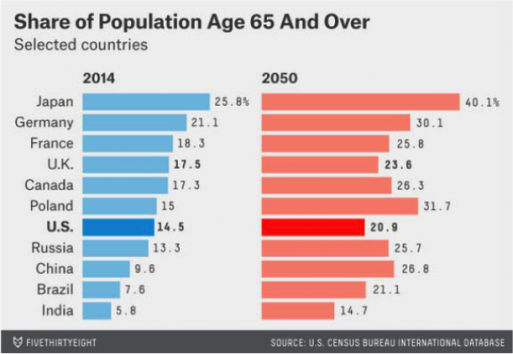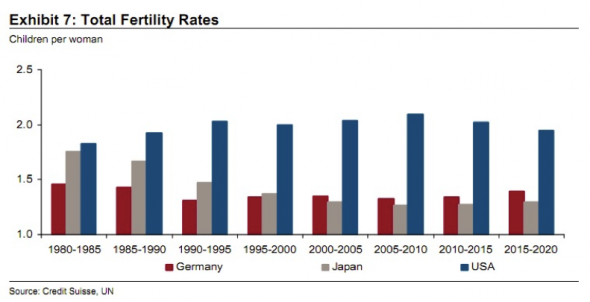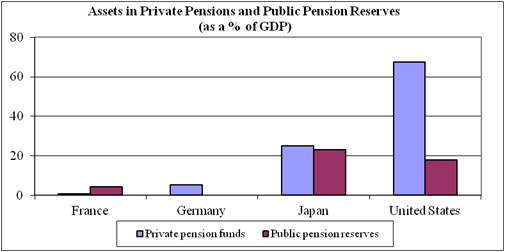Got a question or need some “how-to” advice to make life in NYC smooth sailing? Review our expert blog featuring topics ranging from parenting advice, product reviews the NY school system, important laws, taxes, moving tips, and more.
Investment Tips: Demographic Outlook in the U.S. and in Germany
- July 1st 2014, 11am
- by Karin Mueller
- comments: 0
The impact of demographics on economic growth is important and often discussed. While overall population growth is a well-known positive factor for economic expansion, other demographic attributes can have either favorable or detrimental effects. For example, it is important to analyze the effects of a changing age structure of a nation’s population. Below is a look at the age structure of the population in the U.S. and in Germany and the possible effect on the future economic growth prospects for both countries.
As shown in the chart below, the current share of population age 65 and over is 14.5% in the U.S. and 21.1% in Germany. According to this estimate, 30.1% of the population in Germany and 20.9% of the population in the U.S. will be 65 and older by the year 2050. That works out to a 9% increase for Germany and a 6% increase for the U.S. from current levels.

One of the reasons for this trend is a lower fertility rate in Germany compared to the U.S. As shown in the chart below, the fertility rate in Germany declined between 1980 and 1995 and has recovered little since that time. Between 2000 and 2013, the German fertility rate stayed at approximately 1.4 children born per woman in her childbearing years . Between 2015 and 2020 the fertility rate is forecasted to increase a little, but is expected to remain below the “replacement level” of about 2.2 needed for a stable population.
Compared to Germany, the U.S. has recorded higher fertility rates in the past decades. From 1980 to 2010 the rate has been increasing. Between 2004 and 2008 the fertility rate reached a high of 2.1 children . In the next few years it is expected to decline somewhat. Nevertheless, the fertility rate in the U.S. is expected to remain higher than in Germany. And while both countries are benefitting from immigration, which helps support population growth, there is not enough net immigration into Germany to offset the low birth rate. In contrast, the U.S. population is projected to continue to increase by about 1% per year.

What impact do these numbers have on the future economic growth in both countries? According to the World Bank, the German labor force is already declining. While Germany has been able to recently maintain real GDP growth at modest levels thanks to productivity growth, this will become increasingly difficult to achieve in the future and total output has the potential to decline in the years to come. In the U.S., on the other hand, the trend is a more positive economic outlook. By having higher fertility rates and fewer people over 65 as a percentage of the population, the U.S. will remain capable of sustaining a rising labor force and moderate economic growth.
Other issues associated with declining fertility rates and an increasing share of population age 65 and older are health care and pension costs for the aging population. The questions are: Who will bear the costs and what necessary economic changes need to be made? One of the solutions is to build up pension reserves. While shortfalls in U.S. pension reserves rightly get lots of coverage in the press, the situation is much more serious in Germany. As shown in the chart below, private as well as public pension reserves are much larger in the U.S. compared to Germany. The implication may be that taxes will have to be even more burdensome in future years in order to fund the many retirees to come, and higher taxes could further inhibit economic growth.

Source: “Society at a Glance”, OECD, 2011
While the current degree of economic stability might provide some comfort, it is important to take a look at the trends and to analyze their impacts in the future. Uncomfortable questions need to be asked: Is it possible to reverse or at least partially offset the effects of current trends? How can we prepare for a declining work force while at the same time taking care of the elderly? And what impact will these trends have on future growth and business development. For all its problems, the U.S. looks quite favorable compared to the powerhouse of Europe.






0 Comments